Merging Majors
Senior Elizabeth Ensink discovers new opportunities through Hope’s interdisciplinary approach to liberal arts.
This summer, senior Elizabeth Ensink of Hudsonville, Michigan, participated in one of the United States’ most competitive undergraduate creative writing fellowships, “Nature in Words.” The 10-week fellowship, based at Hastings, Michigan’s Pierce Cedar Creek Institute for environmental education, provided a unique opportunity for Ensink to merge the diverse academic interests that she’s been able to pursue at a high level at Hope, where she is majoring in both biology and English with a writing emphasis.
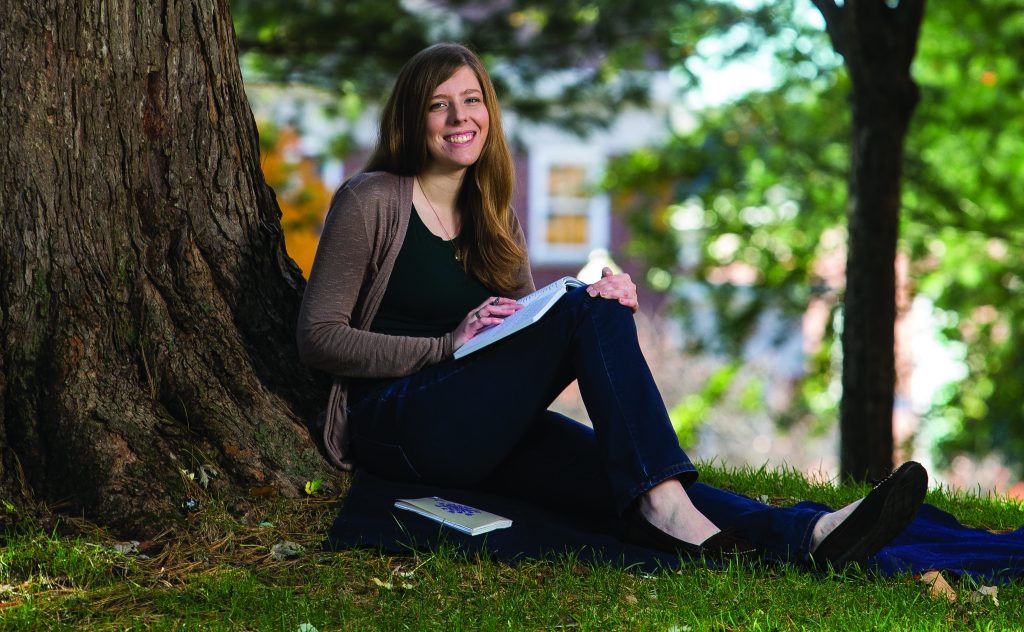
It wasn’t the first time that she earned major external recognition for her work either. In April, she was one of only 60 undergraduates nationwide chosen to present original research during the 20th annual “Posters on the Hill” event held in Washington, D.C., and sponsored by the Council on Undergraduate Research (CUR).
Throughout the summer fellowship, Ensink worked on a series of lyric essays, titled “Field Guide on Disappearing,” that utilized research about Michigan’s flora and fauna, combined with personal reflection, to cultivate peoples’ understanding of their natural surroundings.
“My study of biology fit into this project naturally in many ways,” Ensink says. “Many of my essays included more formal scientific descriptions of species and natural phenomena, along with the imagery and narratives that are more familiar to creative writing.”
She adds, “I also used the research skills and curiosity I’ve developed while studying biology to help me find information and new questions to ask. I think my fascination with the biological world fueled a lot of my writing, and the Pierce Cedar Creek Institute provided an environment where I could really pursue that interest.”
Although Nature in Words Fellowship students are required to write about nature, they are also able to choose which angle they would like to use as they complete their projects. Ensink chose to develop lyric essays that emulated the format of scientific field guides.
“As a result, Elizabeth was able to blend her creative writing ability with her knowledge of science,” says Sara Syswerda, Pierce Cedar Creek Institute’s education and field station director, who served as Ensink’s fellowship supervisor. “She was also able to blend the scientific writing style with a more creative writing style, which is not often done.”
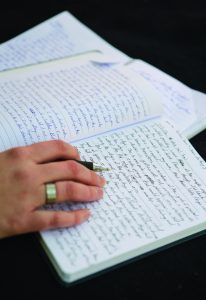
Due to her studies at Hope, Ensink knew how to automatically analyze text as a reader and as a writer. She was also aware of various literary techniques, and able to incorporate research and experiment with form and style—two necessary skills throughout her fellowship.
“Simultaneously, Elizabeth’s familiarity with scientific texts and processes of inquiry was highly generative to—and essential for—her project,” says Dr. Susanna Childress Banner, assistant professor of English, and Ensink’s fellowship mentor. “She brought to her project a depth and breadth of scientific knowledge, including attention to minute detail and a general understanding of contexts and technical terms, which sprung organically from her interests in biology.”
Ensink’s participation a month earlier in CUR’s highly selective “Posters on the Hill” event, during which students shared their work with members of Congress, congressional staff, federal government officials, academics and other researchers, stemmed from her participation in the college’s Andrew W. Mellon Foundation Scholars Program in the Arts and Humanities. As a Mellon Scholar, she began to conduct research after her sophomore year, ultimately focusing on a topic in which she could utilize both of her majors.
“The liberal arts perspective of every class motivated me to find ways that biology and English informed each other, as Hope cultivated an environment where interdisciplinary perspectives are encouraged.”
Titled “The First Inoculation Debate: A Quantitative Text Analysis of the Boston Smallpox Endemic of 1721,” her research project had two primary goals: To analyze how religious views and cultural tensions influenced concerns over inoculation (a primitive form of vaccination) when it was first used in America in 1721 during a smallpox outbreak, and to explore how digital tools, particularly text analysis with a tool called Voyant, help researchers uncover and visualize new perspectives on historical documents. She was also intrigued by parallels with the contemporary debate in the United States regarding vaccination.
“When I realized that the vaccination debate began over 200 years ago with some of the same concerns we see today, I became very interested in exploring those connections and the way cultural factors influence medical debates,” Ensink says. “The Mellon Scholars program, which emphasizes bringing digital technology to humanities research, provided me the opportunity to take this interdisciplinary approach and learn about some of the new ways we can study history, namely quantitative text analysis.”
Ensink was mentored by Dr. Jonathan Hagood, associate professor of history, as she developed and presented her research project. While observing Ensink’s progress, Hagood noticed the direct influence that both of her majors had on her research capabilities. In particular, he believes that Ensink’s biology background helped her understand the science behind inoculation and vaccination, so that she could successfully translate the meaning of historical texts, as they related to scientific subjects.
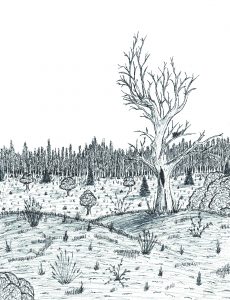
“Her English and creative writing background also helped her empathize with the authors she studied and gave her insights that were useful to analyzing the texts and understanding the results of the data and text analysis,” Hagood says. “That is, it’s one thing to report what the tool tells you; it’s another to explain it. Her background gave her the tools necessary for evaluating, contextualizing and explaining the results.”
As Ensink prepares to graduate, she remains deeply influenced by Hope’s interdisciplinary approach to liberal arts. In fact, she intends to once again blend her passions for biology and creative writing, as she pursues a full-time science writing position.
“The information I learned in biology classes has inspired images and unique forms for poems, while the attention to detail and language honed in my writing classes helped improve the precision of my work in biology,” Ensink explains. “The liberal arts perspective of every class motivated me to find ways that biology and English informed each other, as Hope cultivated an environment where interdisciplinary perspectives are encouraged.”
Top photo by Steven Herppich

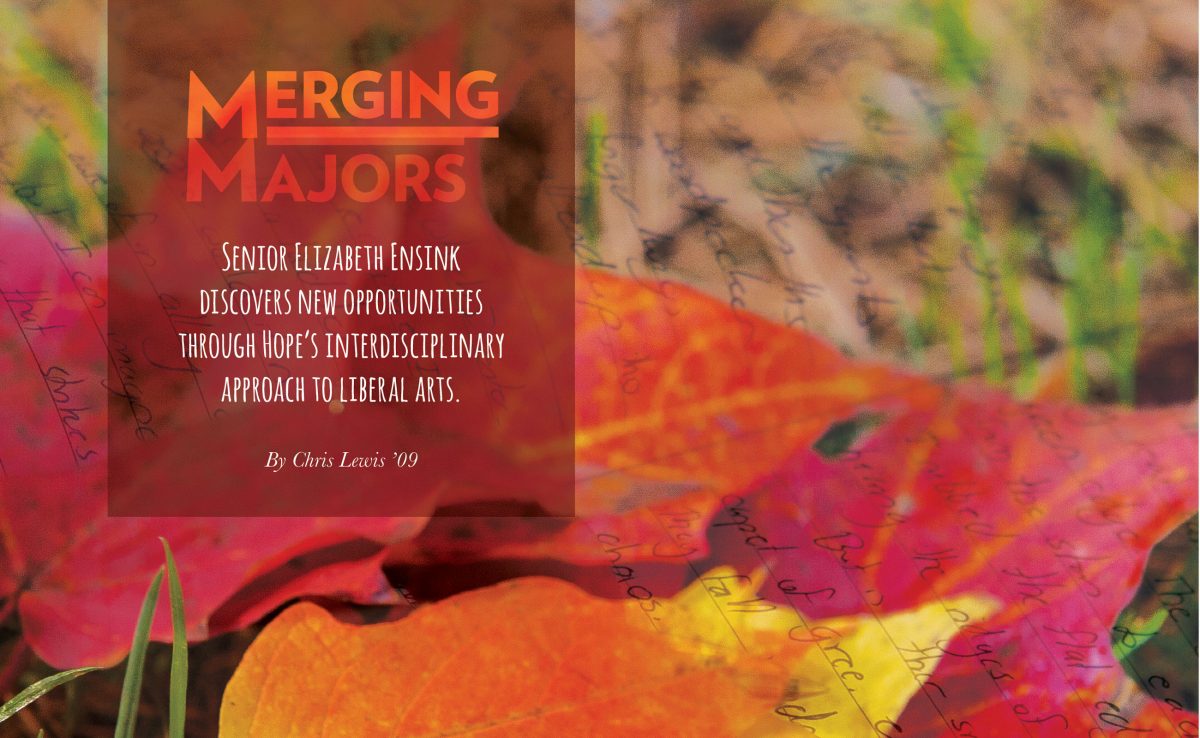
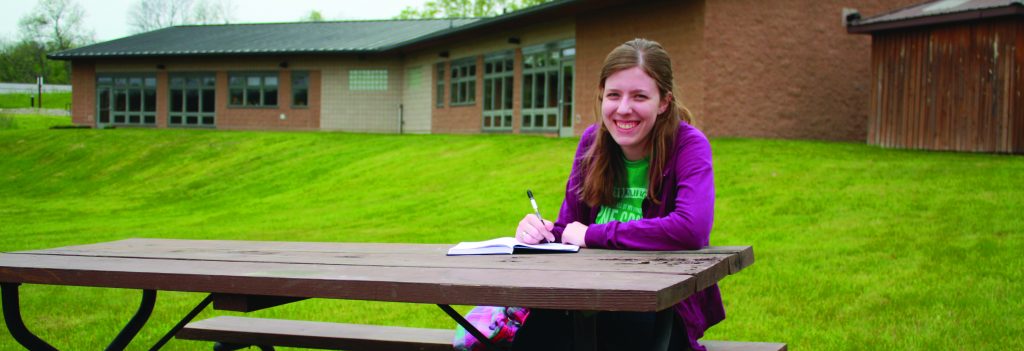
One thought on “Merging Majors”
Comments are closed.